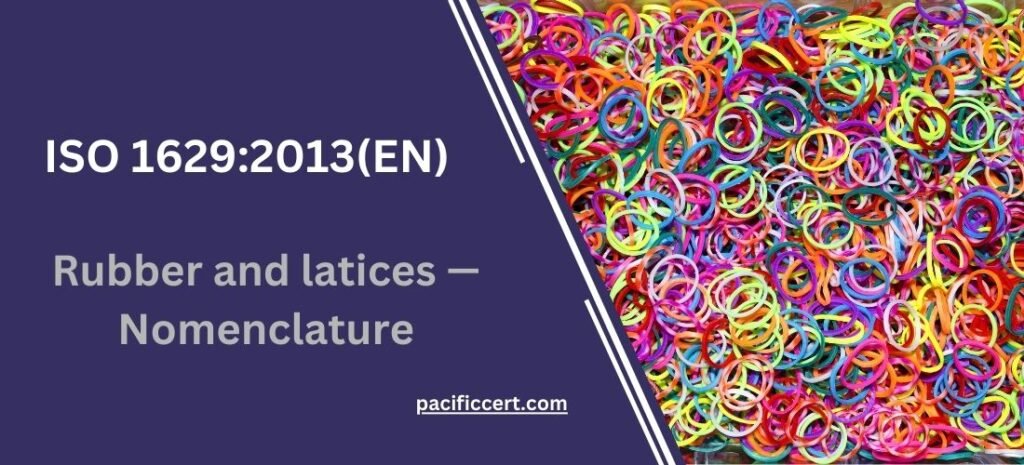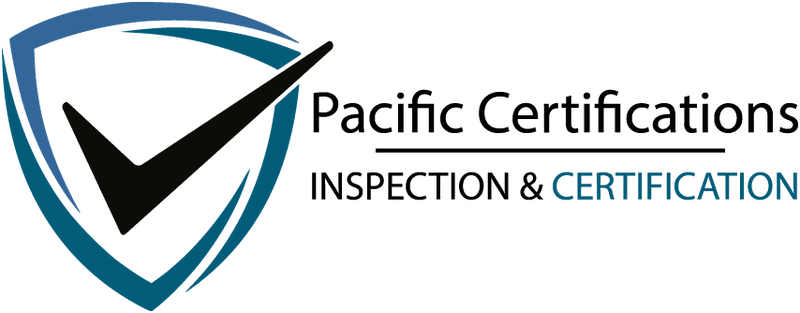
What is ISO 1629:2013 Rubber and latices-Nomenclature?
ISO 1629:2013 Rubber and latices provides a system for the nomenclature of rubbers and latices. The primary objective of ISO 1629:2013 is to establish a uniform, internationally recognized system for naming various types of rubbers and latices, thereby facilitating clearer communication among manufacturers, suppliers, and end-users.
The standard categorizes rubbers and latices based on their polymer backbone, the monomers used, and other specific characteristics. It offers a systematic naming convention that includes abbreviations and codes to identify the type of rubber or latex material. For example, “NR” is used to denote natural rubber, “SBR” for styrene-butadiene rubber, and so on. This nomenclature is particularly useful for technical specifications, product labeling, and in scientific literature to ensure that there is no ambiguity in the identification of materials.
The importance of a standardized nomenclature system like ISO 1629:2013 cannot be overstated. In industries where rubber and latex materials are used, such as automotive, healthcare, and manufacturing, the precise identification of materials is crucial for quality control, compliance, and safety. For instance, in the automotive industry, different types of rubber are used for various components like seals, belts, and hoses. Using the wrong type of rubber can lead to premature wear, product failure, and even safety risks. The standardized nomenclature helps in avoiding such issues by ensuring that everyone in the supply chain is on the same page regarding the materials being used.
In the context of Pacific Certifications, adherence to ISO 1629:2013 would be a key aspect of quality management for companies involved in the production or supply of rubber and latex products. It would help in ensuring that the materials meet the specified requirements and that there is consistency in the naming conventions across different certifications, whether it’s ISO 9001 for quality management or ISO 14001 for environmental management.
In summary, ISO 1629:2013 serves as a vital tool for the standardized identification and naming of rubbers and latices, thereby promoting clarity, quality, and safety across various industries.
What are the requirements for ISO 1629:2013?
ISO 1629:2013 is primarily concerned with establishing a standardized naming system for rubbers and latices. It does not impose performance or quality requirements on the materials themselves, but rather focuses on creating a uniform system for their identification and classification. Below are some of the key requirements and elements of this standard:
Classification Criteria
- Polymer Backbone: The standard specifies how to classify rubbers based on the polymer backbone, such as saturated or unsaturated carbon chains.
- Monomers Used: It also classifies rubbers based on the monomers used in their synthesis. For example, styrene and butadiene are the monomers for styrene-butadiene rubber (SBR).
- Special Characteristics: Additional special characteristics like oil-extended, heat-resistant, or cold-resistant are also considered in the nomenclature.
Naming Conventions
- Abbreviations: The standard provides abbreviations for each type of rubber or latex. For example, “NR” for natural rubber, “EPDM” for ethylene propylene diene monomer rubber, etc.
- Alphanumeric Codes: In some cases, alphanumeric codes may be used to indicate specific properties or modifications to the base rubber.
Documentation and Labeling
- Technical Specifications: The nomenclature should be used in technical specifications, product datasheets, and other official documents to ensure consistency.
- Product Labeling: Products should be labeled with the appropriate nomenclature to facilitate identification and to ensure that they meet the requirements of other relevant ISO standards.
International Recognition
The standard aims to be universally applicable, so it seeks to harmonize existing national and regional naming systems to create an internationally recognized nomenclature.
This is particularly relevant when certifying companies under ISO 9001 for quality management or ISO 14001 for environmental management, where material identification and compliance with international standards are key aspects.
In summary, ISO 1629:2013 does not set quality or performance standards for rubber or latex materials. Instead, it focuses on standardizing the nomenclature used to identify these materials, thereby facilitating clearer communication and better quality control across various industries.
What are the benefits of ISO 1629:2013 Rubber and latices ?
ISO 1629:2013 Rubber and latices standardizes the nomenclature for rubbers and latices, offers several benefits to various stakeholders, from manufacturers and suppliers to end-users and regulatory bodies. Below are some of the key advantages:
Enhanced Communication
- Clarity and Precision: The standardized nomenclature eliminates ambiguity in the identification of rubber and latex materials, thereby reducing the risk of errors in communication among different parties.
- Global Harmonization: As an internationally recognized standard, ISO 1629:2013 helps in harmonizing different naming systems across countries and regions, facilitating global trade and cooperation.
Improved Quality Control
- Material Traceability: The standard aids in the traceability of materials, making it easier to track the usage of specific types of rubber or latex in various applications.
- Compliance and Auditing: A standardized naming system simplifies the process of compliance checks and audits, as it becomes easier to match materials against specifications.
Risk Mitigation
- Safety: In industries like healthcare and automotive, where the use of the correct type of rubber is critical for safety, the standard helps in ensuring that the right materials are used for the right applications.
- Liability: Standardized nomenclature can also reduce legal risks by ensuring that materials are correctly identified and meet the required specifications.
Operational Efficiency
- Streamlined Procurement: For purchasing departments, a standardized naming system simplifies the task of material sourcing, as it becomes easier to identify and compare materials from different suppliers.
- Inventory Management: The standard aids in better inventory control by making it easier to categorize and manage different types of rubber and latex materials.
Facilitation of Research and Development
- Material Innovation: A standardized nomenclature can facilitate research and development activities by providing a common language for the identification and classification of new materials.
- Interdisciplinary Collaboration: Researchers and professionals from different fields can more easily collaborate when a common naming system is in place.
In summary, ISO 1629:2013 serves as a critical tool for standardizing the identification and naming of rubbers and latices, thereby offering numerous benefits in terms of communication, quality control, risk mitigation, operational efficiency, and facilitation of research and development.
Who needs ISO 1629:2013 Rubber and latices — Nomenclature?
The ISO 1629:2013 standard for the nomenclature of rubbers and latices is relevant to a wide range of stakeholders across various industries and sectors. Here’s a breakdown of who might find this standard particularly useful:
Manufacturers
- Rubber and Latex Producers: Manufacturers of rubber and latex materials need to adhere to this standard to ensure that their products are correctly and consistently identified.
- End-Product Manufacturers: Companies that use rubber and latex in their products, such as automotive, healthcare, and consumer goods manufacturers, also benefit from the standard by ensuring that the correct materials are used in production.
Suppliers and Distributors
- Material Suppliers: Suppliers who deal in raw rubber and latex materials can use the standard to correctly label and categorize their products.
- Component Distributors: Distributors of rubber and latex components for various applications also need to adhere to this nomenclature for effective inventory management and sales.
Regulatory Bodies
- Quality Control Agencies: Organizations that are responsible for ensuring the quality and safety of rubber and latex products can use the standard as a basis for their inspections and audits.
- Environmental Agencies: Regulatory bodies concerned with environmental impact can also benefit from the standardized nomenclature when assessing the sustainability of rubber and latex materials.
End-Users
- Industrial Users: Companies that use rubber and latex materials in their operations can rely on the standard to ensure that they are procuring the correct materials.
- Consumers: While not directly interacting with the standard, consumers benefit indirectly through higher quality and safer products.
Certification Bodies
- Quality Certification Organizations: Bodies like Pacific Certifications, which issue management system certifications such as ISO 9001, can use the standard as a reference point for assessing compliance in material identification and usage.
- Environmental Certification Organizations: For certifications like ISO 14001, the standard can help in assessing whether companies are adhering to environmentally responsible practices in the use of rubber and latex materials.
Research and Academic Institutions
- Researchers: Those involved in the study and development of new rubber and latex materials can use the standard as a common language for identification and classification.
- Educational Institutions: Academic institutions that offer courses in materials science, engineering, and related fields can use the standard as a teaching tool.
In summary, ISO 1629:2013 is a versatile standard that serves multiple stakeholders across different sectors. Its adoption ensures a uniform approach to the identification and classification of rubber and latex materials, thereby facilitating better communication, quality control, and compliance. For an organization like Pacific Certifications, understanding and promoting adherence to this standard can enhance the credibility and effectiveness of the certification processes it oversees.
At last, Pacific Certifications is accredited by ABIS, you need more support with ISO 1629:2013 Rubber and latices, please contact us at +91-8595603096 or support@pacificcert.com
Read About: ISO 2006 Rubber latex, synthetic







